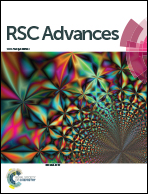5-Carboxylcytosine is resistant towards phosphodiesterase I digestion: implications for epigenetic modification quantification by mass spectrometry†
Abstract
DNA cytosine modifications are important epigenetic modifications in gene regulation and pathogenesis. DNA hydrolysis followed by HPLC-MS/MS is the gold standard in DNA modification quantification. In particular, it is the only sensitive and accurate method for low abundance modifications, such as 5-carboxylcytosine (5caC). Here, we report the discovery of the nuclease resistance property of 5caC to snake venom phosphodiesterase I (PDE1), a 3′ to 5′ exonuclease commonly used in several DNA hydrolysis protocols. We conducted a systematic evaluation of six commonly used hydrolysis protocols and found that all protocols that use PDE1 underestimate the level of 5caC. Finally, we identified the best method for cytosine modification quantification of biological samples, which leads to an over 10-fold higher amount of 5caC being detected compared with other methods. Our results highlight that caution should be taken when choosing a DNA hydrolysis protocol to quantify certain DNA modifications.



 Please wait while we load your content...
Please wait while we load your content...